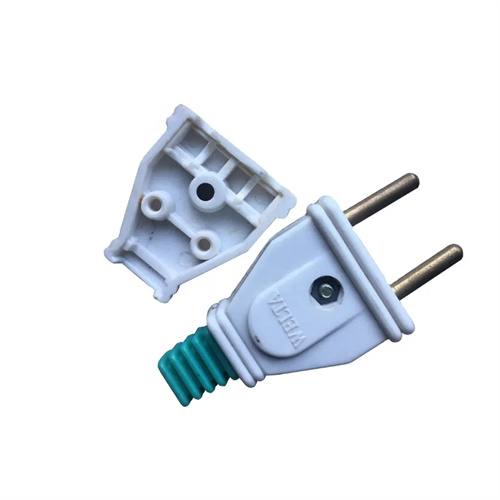A machine adjustment method to solve the problem of gas entrapment caused by melt backflow
Air entrapment caused by melt backflow is a complex defect caused by a sudden change in the melt flow direction during injection molding. It manifests as bubbles or scorch marks inside or on the surface of the plastic part, or a loose structure is formed at the weld. Its essence is that the melt reverses due to pressure fluctuations during the flow process, and the air is trapped inside the melt and cannot be discharged. This defect often occurs in plastic parts with complex flow channels, thin-wall and thick-wall transition areas, or multiple gates, such as the grille structure of a car dashboard, the intersection of the reinforcement ribs of the home appliance housing, etc., and traditional exhaust groove designs are often difficult to completely solve. For example, a certain car center console plastic part frequently experiences air entrapment in the thick-walled area where the grille connects to the main body, resulting in a decrease in the strength of this part and prone to fracture after installation. Analysis found that the melt reversed when filling the thick-walled area, enclosing the air.

Wrap to form bubbles.

The core tuning strategy for resolving backfill gas entrapment lies in suppressing melt backflow by optimizing injection parameters. The primary measure is to employ multi-stage injection pressure and speed control, setting parameters in stages based on the melt’s flow pattern within the mold cavity. As the melt approaches potential backflow areas (such as thick-wall transitions and runner corners), the injection pressure and speed are appropriately reduced to reduce the melt’s kinetic energy and prevent backflow caused by excessive inertia. For example, the thick-walled area of a particular part is 80mm from the gate. The injection process is divided into three stages: From 0-50mm, a high speed of 80mm/s and a high pressure of 80MPa are used to rapidly fill the main runner and thin-walled areas. From 50-70mm, the speed is reduced to a medium speed of 50mm/s and a medium pressure of 60MPa, allowing for a smooth transition to the thick-walled areas. From 70-80mm, the speed is reduced to a low speed of 30mm/s and a low pressure of 40MPa, slowly filling the thick-walled areas. This ensures smooth melt flow, eliminates backflow, and reduces the gas entrapment defect rate from 25% to 3%.

Adjusting the holding pressure parameters is crucial for preventing melt backflow. The holding pressure must match the cavity pressure to prevent reverse melt flow caused by excessively high holding pressure. By delaying the holding pressure (0.5-1.5 seconds) at the injection-hold transition point, and allowing the melt to initially solidify and form a “solidification layer” in the cavity before applying holding pressure, backflow can be effectively prevented. The holding pressure is typically 60%-70% of the injection pressure, using a multi-stage holding method. Initially, the holding pressure is slightly higher (70%) for 1-2 seconds to prevent melt backflow; the subsequent holding pressure is gradually reduced (50%-60%) to reduce residual stress. For example, in a polycarbonate lampshade mold part, the problem of backflow gas was addressed. By delaying the holding pressure transition by 1 second, the holding pressure was adjusted from 70 MPa (injection pressure 100 MPa) to 60 MPa (initial 1 second) and 50 MPa (subsequent 3 seconds). This reduced the melt backflow distance from 3 mm to less than 0.5 mm, essentially eliminating the gas trapping.

Optimizing melt and mold temperatures can improve melt fluidity and reduce backflow. Appropriately increasing the barrel temperature (e.g., raising the barrel temperature for polypropylene from 200°C to 215°C) can reduce melt viscosity, smoother flow, and reduce pressure fluctuations caused by excessive flow resistance. Simultaneously, lowering the mold temperature (e.g., from 60°C to 50°C) accelerates the solidification of the melt on the cavity surface, forming a stable flow front and preventing backflow. For example, by increasing the barrel temperature by 10°C, lowering the mold temperature by 10°C, and optimizing the injection speed, the melt’s flow stability improved by 40%, completely resolving the backflow-induced gas trapping problem. However, it’s important to note that the barrel temperature should not be too high to prevent plastic decomposition. For example, the maximum barrel temperature for polyvinyl chloride should not exceed 190°C.

To prevent backflow and trapped air in multi-gated parts, the order in which the gates are opened and the time differences between them must be adjusted to prevent melt backflow and collision at the intersection. Using time-controlled valve gates, the gates are opened sequentially according to the distance along the melt flow path. This ensures that by the time the melt from the later-opened gates reaches the intersection, the melt from the earlier-opened gates has already solidified, creating a “stepped filling” pattern. For example, a square multi-cavity part utilizes four valve gates, opened in a clockwise sequence with a delay of 0.3 seconds. This prevents noticeable backflow when the melt from each gate converges at the center of the cavity. This improves weld mark strength by 20% and reduces the air trapping defect rate from 18% to 2%. Furthermore, CAE mold flow analysis software simulates melt flow patterns and predicts the location and timing of backflow, providing a scientific basis for optimizing machine parameters and significantly shortening commissioning cycles. For example, mold flow analysis revealed that backflow primarily occurred in the third filling stage. Targeted adjustments to the pressure and speed in this stage reduced commissioning time from two days to four hours. By comprehensively applying parameter optimization, temperature adjustment and timing control, the problem of gas entrapment caused by melt backflow can be effectively solved.
